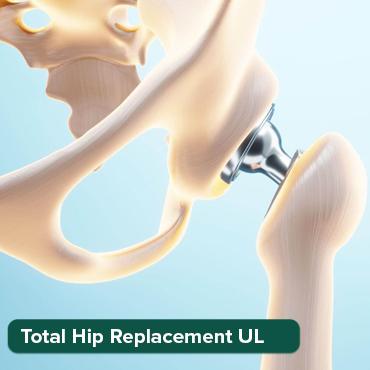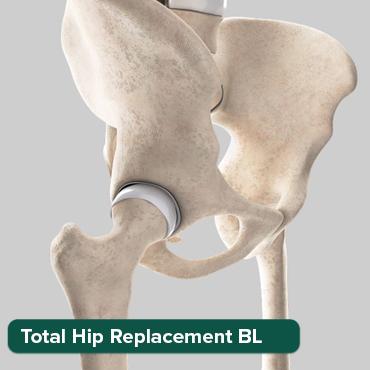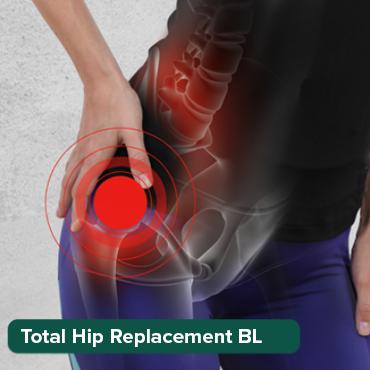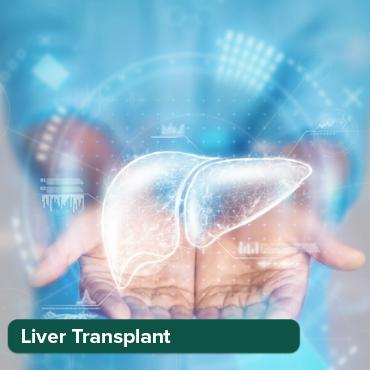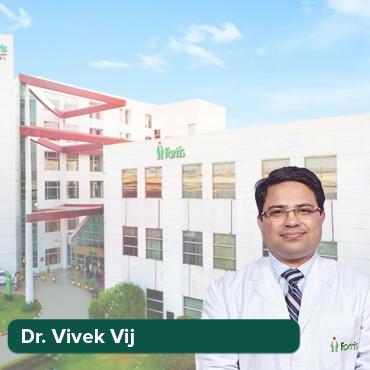
Top Technologies Used in Liver Transplant Across Healthtrip Hospitals
26 Sep, 2025
 Healthtrip
Healthtrip- Advanced Technologies in Patient Selection for Liver Transplant
- Intraoperative Surgical Navigation Systems
- Robotic-Assisted Liver Transplantation
- Advanced Organ Preservation Techniques
- Precision Immunosuppression Monitoring
- Post-Transplant Telemedicine and Remote Monitoring at Fortis Memorial Research Institute, Gurgaon and Max Healthcare Saket
- Conclusion
Minimally Invasive Surgical Techniques
Minimally invasive surgical techniques have revolutionized liver transplantation, offering significant benefits over traditional open surgery. Hospitals like Fortis Memorial Research Institute, Gurgaon are increasingly adopting laparoscopic and robotic-assisted approaches. Laparoscopic surgery involves small incisions through which surgeons insert specialized instruments and a camera to visualize the surgical field. Robotic surgery takes this a step further, providing surgeons with enhanced dexterity, precision, and three-dimensional visualization. These techniques translate to smaller scars, reduced pain, shorter hospital stays, and faster recovery times for patients. Imagine undergoing a major surgery and being back on your feet sooner than you thought possible! Less pain means less medication, getting you back to feeling like yourself more quickly. These advancements not only improve the physical aspects of recovery but also contribute to improved mental well-being, knowing that you're healing effectively and efficiently. Healthtrip is committed to connecting you with hospitals that prioritize these innovative approaches, ensuring a less invasive and more comfortable experience.
Most popular procedures in India
Advanced Imaging Technologies
Accurate and detailed imaging is crucial for both pre-operative planning and post-operative monitoring in liver transplantation. Advanced imaging technologies such as Magnetic Resonance Imaging (MRI), Computed Tomography (CT) scans, and Ultrasound are essential tools used at facilities like Max Healthcare Saket. High-resolution MRI provides detailed images of the liver's structure, helping surgeons assess the extent of damage or disease. CT scans offer quick and comprehensive views of the abdomen, aiding in the detection of any complications. Doppler ultrasound is used to evaluate blood flow to and from the transplanted liver, ensuring proper function. These technologies allow medical teams to make informed decisions, personalize treatment plans, and detect potential issues early on. Think of these imaging tools as a GPS for surgeons, guiding them with pinpoint accuracy! The detailed information provided by these scans helps minimize risks and maximize the chances of a successful transplant. Healthtrip ensures that the hospitals within our network are equipped with these state-of-the-art imaging capabilities, providing patients with the most accurate and reliable diagnostics available.
Wellness Treatments
Give yourself the time to relax
Lowest Prices Guaranteed!

Lowest Prices Guaranteed!
Intraoperative Monitoring Systems
During liver transplantation, real-time monitoring of the patient's vital signs and liver function is paramount. Sophisticated intraoperative monitoring systems provide surgeons with continuous feedback, allowing them to make immediate adjustments as needed. These systems track various parameters, including blood pressure, heart rate, oxygen levels, and liver enzyme levels. Advanced monitoring helps detect any signs of complications early on, such as bleeding or impaired blood flow to the transplanted liver. At hospitals such as Memorial Sisli Hospital, this constant vigilance allows surgeons to react quickly and effectively, minimizing the risk of adverse events. Imagine having a dedicated team constantly watching over you during surgery, ensuring everything runs smoothly. These systems act as an early warning system, allowing for proactive intervention and preventing potential problems. Healthtrip prioritizes hospitals that invest in these advanced monitoring technologies, ensuring the highest level of patient safety during liver transplant procedures. With these systems in place, you can rest assured that you are in the safest possible hands.
Organ Preservation Techniques
The preservation of donor livers is critical to the success of transplantation. Advanced organ preservation techniques aim to extend the viability of the liver outside the body, allowing for more time to find a suitable recipient and minimizing the risk of damage to the organ. Hypothermic machine perfusion is one such technique that involves circulating a cold, oxygenated solution through the liver to keep it viable for longer periods. This technology improves the quality of the transplanted organ and increases the chances of successful engraftment. Facilities like Saudi German Hospital Cairo, Egypt utilize these advanced preservation methods to ensure that the donor livers are in the best possible condition when transplanted. Think of it like putting the liver in suspended animation, keeping it healthy and ready for its new home! These techniques are particularly important when dealing with livers that are more susceptible to damage, such as those from older donors. Healthtrip partners with hospitals that employ these cutting-edge preservation technologies, giving patients the best possible chance of receiving a healthy, viable liver.
Advanced Technologies in Patient Selection for Liver Transplant
Selecting the right patient for a liver transplant is a critical decision, a delicate balance of hope and practicality. It's not just about finding someone who needs a new liver; it's about ensuring that the transplant has the highest possible chance of success. Advanced technologies are revolutionizing this selection process, moving us away from relying solely on clinical judgment to incorporating data-driven insights. Imagine a future where we can predict with greater accuracy who will benefit most from a transplant, minimizing risks and maximizing positive outcomes. This involves sophisticated imaging techniques like MRI elastography, which assesses liver stiffness to determine the extent of fibrosis, and advanced blood tests that provide a detailed profile of the patient’s overall health and immune system function. These technologies help doctors at hospitals like Fortis Memorial Research Institute, Gurgaon and Max Healthcare Saket gain a deeper understanding of each patient’s unique circumstances. Moreover, genetic testing is becoming increasingly important, helping to identify patients with specific genetic predispositions that might affect their long-term outcomes after transplantation. By integrating these cutting-edge technologies, doctors can tailor the selection process to each individual, leading to more successful transplants and improved quality of life for patients. Healthtrip is committed to connecting patients with hospitals that are at the forefront of these advancements, ensuring access to the best possible care.
Intraoperative Surgical Navigation Systems
Intraoperative surgical navigation systems are like GPS for surgeons, guiding them through the complex landscape of the human body with unparalleled precision. These systems use real-time imaging, often combined with pre-operative scans, to create a detailed 3D map of the patient’s liver. During the transplant surgery, the surgeon can use this map to navigate the intricate network of blood vessels and tissues, avoiding critical structures and ensuring accurate placement of the new liver. Think of it as having a sat-nav for surgery, minimizing the risk of complications and improving the overall outcome. This technology is particularly valuable in complex cases, such as those involving tumors or previous surgeries, where the anatomy may be distorted. Hospitals like Saudi German Hospital Cairo, Egypt are increasingly adopting these systems to enhance the accuracy and safety of liver transplant procedures. The use of intraoperative navigation systems can lead to shorter surgery times, reduced blood loss, and faster recovery times for patients. It’s a testament to how technology is transforming the surgical landscape, making procedures safer and more effective. Healthtrip recognizes the importance of these advancements and strives to connect patients with leading medical facilities that offer state-of-the-art surgical navigation technology.
Robotic-Assisted Liver Transplantation
Robotic-assisted surgery is no longer a futuristic fantasy; it's a present-day reality that's transforming the field of liver transplantation. Imagine a surgeon controlling robotic arms with incredible precision and dexterity, performing complex maneuvers through small incisions. This minimally invasive approach offers numerous benefits for patients, including reduced pain, smaller scars, and faster recovery times. While traditional open surgery requires large incisions, robotic surgery allows for a more delicate and precise approach, minimizing trauma to the surrounding tissues. This can lead to fewer complications and a shorter hospital stay. Though not yet widely adopted for full liver transplantation due to the complex vascular connections, robotic assistance is increasingly used in specific aspects of the procedure, such as donor hepatectomy (removing the liver from the donor) and managing biliary complications. Hospitals like Fortis Hospital, Noida and Max Healthcare Saket are exploring and implementing robotic-assisted techniques to improve outcomes for their patients. The enhanced visualization and maneuverability afforded by robotic systems can make complex tasks easier and safer for the surgeon. Despite the high initial investment, the long-term benefits of robotic surgery, including reduced healthcare costs and improved patient satisfaction, make it an increasingly attractive option. Healthtrip is dedicated to providing patients with information about the latest advancements in robotic surgery, empowering them to make informed decisions about their treatment options.
Also Read:
Advanced Organ Preservation Techniques
Organ preservation has always been a critical aspect of liver transplantation. The longer a liver can be safely preserved outside the body, the more time surgeons have to match it with a suitable recipient and coordinate the complex logistics of transplantation. Traditional methods, such as static cold storage, have limitations in terms of preservation time and potential for ischemia-reperfusion injury. However, advancements in preservation techniques are pushing the boundaries. Machine perfusion is one such technique, where the organ is connected to a device that pumps a nutrient-rich solution through its vasculature, mimicking a more natural physiological environment. This can extend preservation time, reduce injury, and even allow for the resuscitation of marginally acceptable livers. The use of hypothermic machine perfusion, as well as normothermic machine perfusion, allows for the assessment of the organ's viability before transplantation, potentially reducing the risk of graft failure. These technologies offer hope for expanding the donor pool and improving outcomes for patients awaiting liver transplants. Facilities like the Saudi German Hospital Cairo, Egypt, and Fortis Healthcare are actively exploring and implementing these techniques, ensuring patients receive the best possible care.
As research continues to unveil the benefits of these advanced preservation methods, we can expect to see even more sophisticated techniques emerge. Future innovations may include the use of oxygen carriers in perfusion solutions, gene therapy to protect the organ during preservation, and even the development of artificial livers that can support patients while they await transplantation. The goal is to minimize the risk of organ damage during the preservation process, maximizing the chances of a successful transplant. For instance, Helios Klinikum Erfurt in Germany is renowned for its research into innovative organ preservation techniques, aiming to reduce the incidence of post-transplant complications and improve long-term graft survival rates. These global advancements are transforming the landscape of liver transplantation, bringing hope to countless individuals in need of a life-saving organ.
Also Read:
Precision Immunosuppression Monitoring
After a liver transplant, the recipient's immune system naturally recognizes the new organ as foreign and attempts to reject it. Immunosuppressant medications are crucial to prevent this rejection, but finding the right balance is a delicate act. Too little immunosuppression can lead to rejection, while too much can increase the risk of infections, kidney damage, and other complications. Traditional immunosuppression monitoring often relies on measuring drug levels in the blood, but this approach has limitations. Drug levels can vary significantly from person to person, and they don't always correlate with the actual effect of the drug on the immune system. Precision immunosuppression monitoring aims to overcome these limitations by using more sophisticated techniques to assess the individual's immune status. These techniques can include measuring the levels of specific immune cells, cytokines, and other biomarkers that indicate the risk of rejection or over-immunosuppression. By tailoring the immunosuppression regimen to the individual's specific needs, clinicians can minimize the risk of complications and improve long-term outcomes. Hospitals like Mount Elizabeth Hospital in Singapore and Quironsalud Hospital Murcia in Spain are at the forefront of implementing these advanced monitoring strategies.
The future of precision immunosuppression monitoring holds even greater promise. Researchers are developing new tests that can predict the risk of rejection or infection weeks or even months in advance, allowing for preemptive adjustments to the immunosuppression regimen. Some of these tests involve analyzing gene expression patterns in blood samples or using artificial intelligence to identify subtle changes in immune function. The ultimate goal is to develop a personalized immunosuppression strategy for each patient, based on their unique immune profile and risk factors. This personalized approach has the potential to dramatically improve the safety and efficacy of liver transplantation, leading to better outcomes and a higher quality of life for transplant recipients. Fortis Memorial Research Institute, Gurgaon, is actively involved in clinical trials evaluating these innovative monitoring technologies, striving to provide patients with cutting-edge care.
Post-Transplant Telemedicine and Remote Monitoring at Fortis Memorial Research Institute, Gurgaon and Max Healthcare Saket
Life after a liver transplant requires ongoing monitoring and management to ensure the graft remains healthy and the recipient stays well. Traditionally, this has meant frequent visits to the transplant center, which can be challenging for patients who live far away or have mobility issues. Telemedicine and remote monitoring are transforming post-transplant care by allowing clinicians to monitor patients' health remotely. This can involve video consultations, remote monitoring of vital signs (such as blood pressure and heart rate), and the use of mobile apps to track symptoms and medication adherence. These technologies can improve access to care, reduce the burden of travel, and allow for earlier detection of potential problems, leading to more timely interventions. Max Healthcare Saket and Fortis Memorial Research Institute, Gurgaon, are pioneering the use of telemedicine and remote monitoring in post-transplant care, offering patients a more convenient and accessible way to stay connected with their healthcare team.
The benefits of telemedicine and remote monitoring extend beyond convenience and accessibility. By continuously monitoring patients' health, clinicians can identify subtle changes that might indicate early signs of rejection or infection. This allows for prompt intervention, potentially preventing serious complications and improving long-term outcomes. Furthermore, telemedicine can empower patients to take a more active role in their own care, improving medication adherence and promoting healthy lifestyle choices. As technology continues to advance, we can expect to see even more sophisticated remote monitoring tools emerge, such as wearable sensors that can track a wider range of physiological parameters. The use of artificial intelligence to analyze remote monitoring data can also help clinicians identify patients who are at high risk of complications, allowing for more targeted interventions. With these advancements, post-transplant care is becoming more personalized, proactive, and patient-centered.
Also Read:
Conclusion
The field of liver transplantation is undergoing a rapid transformation, driven by technological advancements and a growing understanding of the complexities of the immune system. From advanced organ preservation techniques to precision immunosuppression monitoring and telemedicine, these innovations are improving outcomes, expanding access to care, and enhancing the quality of life for transplant recipients. Hospitals like Fortis Memorial Research Institute, Gurgaon, Max Healthcare Saket, and Saudi German Hospital Cairo, Egypt, are at the forefront of this revolution, embracing new technologies and pushing the boundaries of what's possible. As research continues to advance, we can expect to see even more groundbreaking innovations emerge, bringing hope and healing to countless individuals in need of a life-saving liver transplant. Healthtrip is committed to connecting patients with these advanced medical centers, facilitating access to the best possible care and empowering them to navigate their transplant journey with confidence.
The future of liver transplantation is bright, and with continued innovation and collaboration, we can look forward to a world where more patients receive the life-saving organs they need, leading longer, healthier, and more fulfilling lives. This journey requires a comprehensive approach, focusing not only on the surgical procedure itself but also on the pre-transplant evaluation, post-transplant management, and the overall well-being of the patient. By embracing these advancements and prioritizing patient-centered care, we can continue to improve the outcomes of liver transplantation and make a lasting difference in the lives of individuals affected by liver disease.
Related Blogs

Complete Cost Breakdown of Eye Surgery with Healthtrip
Learn about doctors, hospitals, procedures, and recovery for eye surgery

How to Prepare for Your Eye Surgery in India
Learn about doctors, hospitals, procedures, and recovery for eye surgery

Side Effects and Risk Management of Eye Surgery
Learn about doctors, hospitals, procedures, and recovery for eye surgery

Follow-Up Care for Eye Surgery Patients with Healthtrip Assistance
Learn about doctors, hospitals, procedures, and recovery for eye surgery

Best Hospital Infrastructure for Eye Surgery
Learn about doctors, hospitals, procedures, and recovery for eye surgery

What to Expect During a Eye Surgery Consultation
Learn about doctors, hospitals, procedures, and recovery for eye surgery
